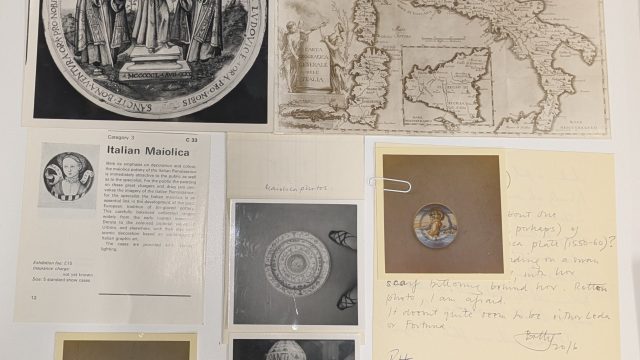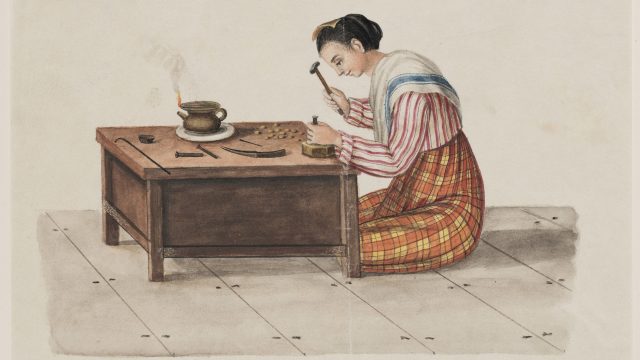The Organization in Solidarity with the People of Africa, Asia and Latin America, known in Spanish as Organización de Solidaridad con los Pueblos de Asia, África y América Latina (OSPAAAL), was formed after the 1966 Tricontinental Conference held in Havana, Cuba. The institution was established to promote military, economic and political ties between Cuba and other countries fighting against colonialism, racism and imperialism.
In order to promote a global dialogue, OSPAAAL published Tricontinental, a quarterly magazine sent to subscribers, which often contained a fold-out poster that used visual metaphors and clever graphics to inform and inspire readers to take up arms and spread the organization’s anti-capitalist and anti-America message around the world.
At its peak, between the 1960s and 1970s, Tricontinental printed up to 50,000 copies per issue which they distributed amongst political, artistic, and academic circles in 87 countries mainly in Spanish but some issues were translated to French, English and, occasionally, Arabic and Italian. Print became a vital tool for Cuba’s revolutionary government. Cuban artists and designers who had worked in commercial advertising throughout Latin America were given new messages to disseminate about public cooperation. This led to a new national identity arising from the pursuit of a socialist government based on the ideals of some of the most representative theorists: Karl Marx, Vladimir Lenin and Jose Marti.
Of the over 300 posters distributed by the Tricontinental magazine, about 25 included the image of Marxist Revolutionary Ernesto “Che” Guevara in their design. Alberto Korda (Alberto Díaz Gutiérrez) was a well-known Cuban fashion photographer who, during a funeral in 1960, captured the most reproduced photo of the 20th century titled Heroic Guerrilla Fighter, a portrait of Guevara. The portrait was edited by Irish artist Jim Fitzpatrick and after its global distribution, it soon became a brand image of the Cuban Revolution, personifying the ideals of the movement.
OSPAAAL’s first poster portraying the image of Korda’s Heroic Guerrilla Fighter was issued on April 16th, 1967, together with a brochure containing Guevara’s message to the Tricontinental. This message was a piece Guevara had written in 1966 before leaving for Bolivia where he was eventually captured and executed. This poster is made up of three photos taken during Guevara’s internationalist mission in Congo in 1965 and includes the phrase ‘Create two, three… many Viet Nam’, which was used by Guevara in his manifesto to stress the importance of continuing the revolutionary struggle to undermine U.S. supremacy.
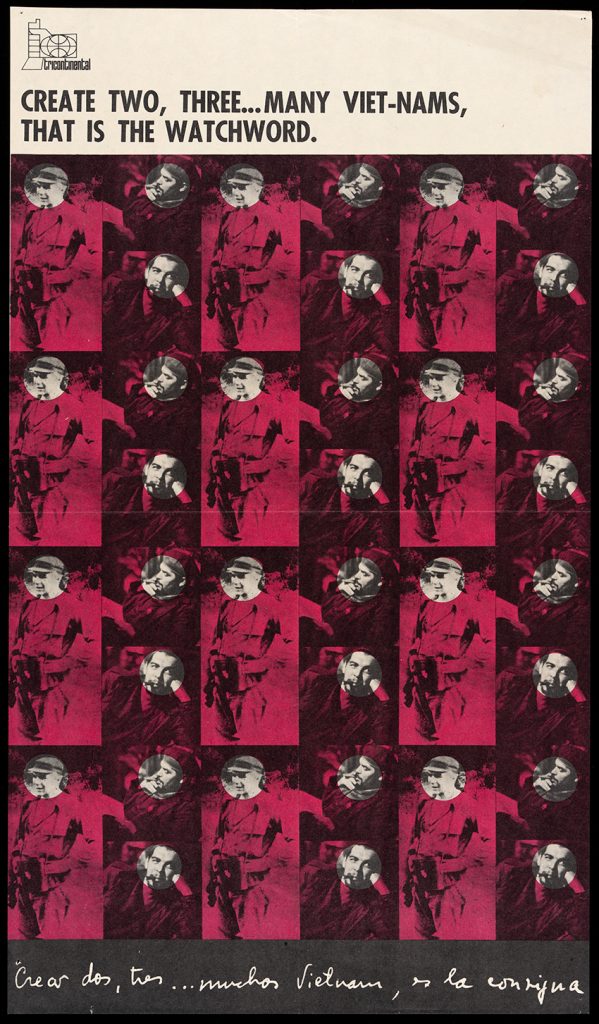
To honour the first anniversary of Guevara’s death, OSPAAAL commissioned Day of the Heroic Guerilla, 8 October by Elena Serrano, printed in September–October 1968. Serrano placed Korda’s famous portrait of Guevara over the South American continent, specifically over Bolivia, as a reminder of where he died. The vibrant colours and contrast of the vibrating Op art image, which repeated the figure of Guevara in the well-known revolutionary red spreading across Latin America out into the ocean and the rest of the world, stood to symbolise the international nature of the Anti-Imperialistic Revolution. This poster was the most disseminated one from OSPAAAL, being shared around the world.
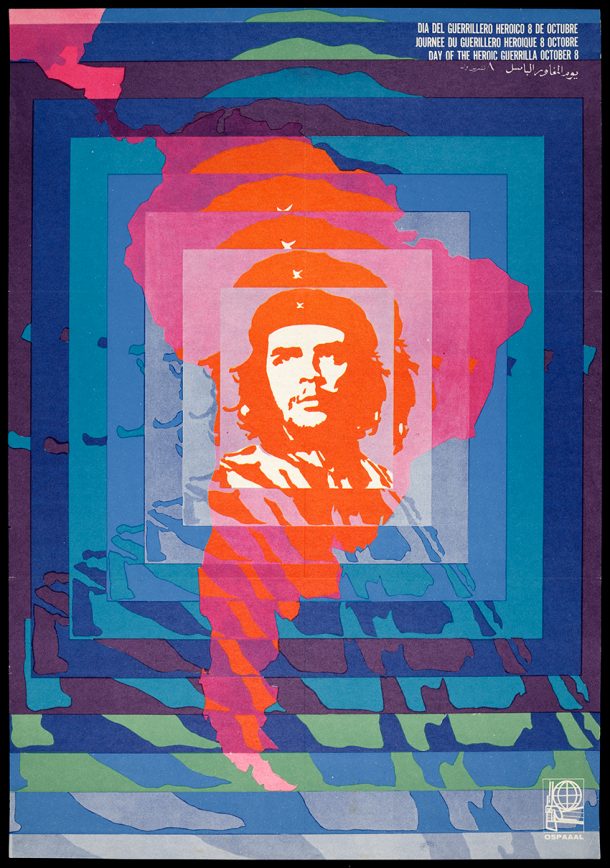
In 1969, Alfredo Rostgaard, master of Cuban graphic design and artistic director of OSPAAAL, designed the poster Radiant Che. Yet again, this work comprises Korda’s portrait of Guevara with a beaming star on his beret, symbolically alluding to the universal scope of his political legacy.
Material shortages were a frequent challenge for printers in revolutionary Cuba due to American blockades; a limited colour palette could be reproduced faithfully by either offset lithography or screen-printing. Many of the images used were sourced from the archive of the Department of Revolutionary Orientation, and often one photograph was used to create designs for different applications. This poster is one of the most colourful in the collection and was a big sensation at the time.
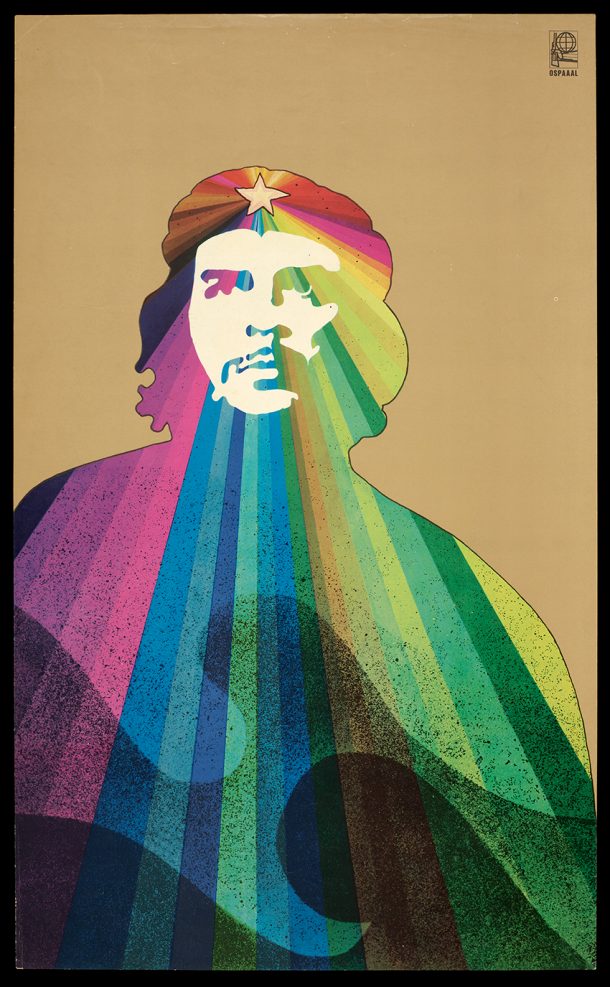
Cuban designer Lazaro Abreu’s poster from 1970 commemorates the Day of the Heroic Guerrilla. This poster displays a multicoloured, traditional Andean poncho woven in a mixture of indigenous patterns alongside reproductions of Korda’s black and white portrait of Guevara. The poncho hangs from the silhouette of a Carbine M2 rifle which was Guevara’s weapon of choice during his revolutionary fight through Latin America.
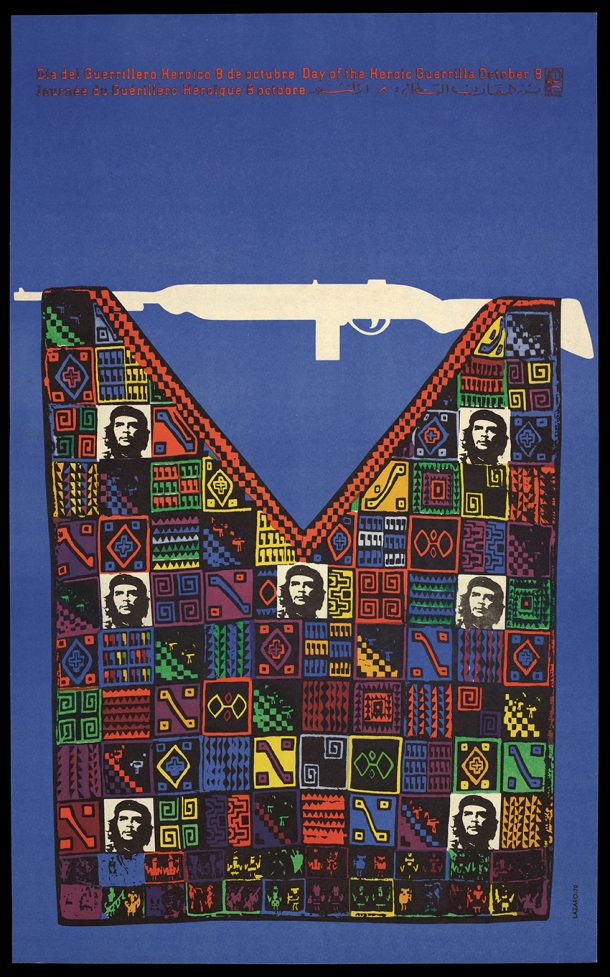
Olivio Martinez’s poster was issued in 1978. The poster was innovative at the time due to its colour combination and straightforward design, which shows Guevara deep in thought as though gazing into the future. This poster was not as popular outside Cuba perhaps because the image used was not Korda’s widely-recognised portrait.
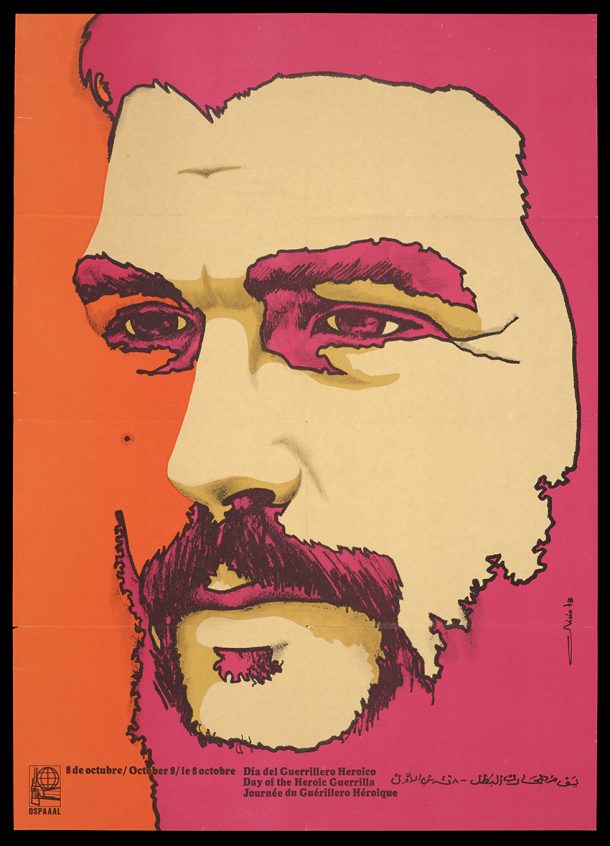
Following the collapse of the Soviet Union in the 1990s, OSPAAAL’s print media production declined. Though the organization remained active until its closure in 2019, its productivity and creative output during the Cold War period was never achieved again. However, the formidable work of OSPAAAL designers has cemented the organization as one of the most important centers of graphic design in 20th-century Latin America due to the innovative unification of design and printing techniques with political ideals, developing the identity of Latin American Revolutionary Art.
In 2006, the V&A had an exhibition titled Che Guevara: Revolutionary and Icon which looked at Guevara’s transformation from heroic guerilla to pop celebrity was traced through the lens of photography.
A selection of posters can be seen in the temporary exhibition OSPAAAL: Solidarity and Design until the 31 of March 2023 at Gallery 74a, Design 1900-Now, V&A South Kensington.
The V&A has collected almost 200 OSPAAAL posters which you can also access through the Prints and Drawings Study Room or learn more by visiting Explore the Collections.

